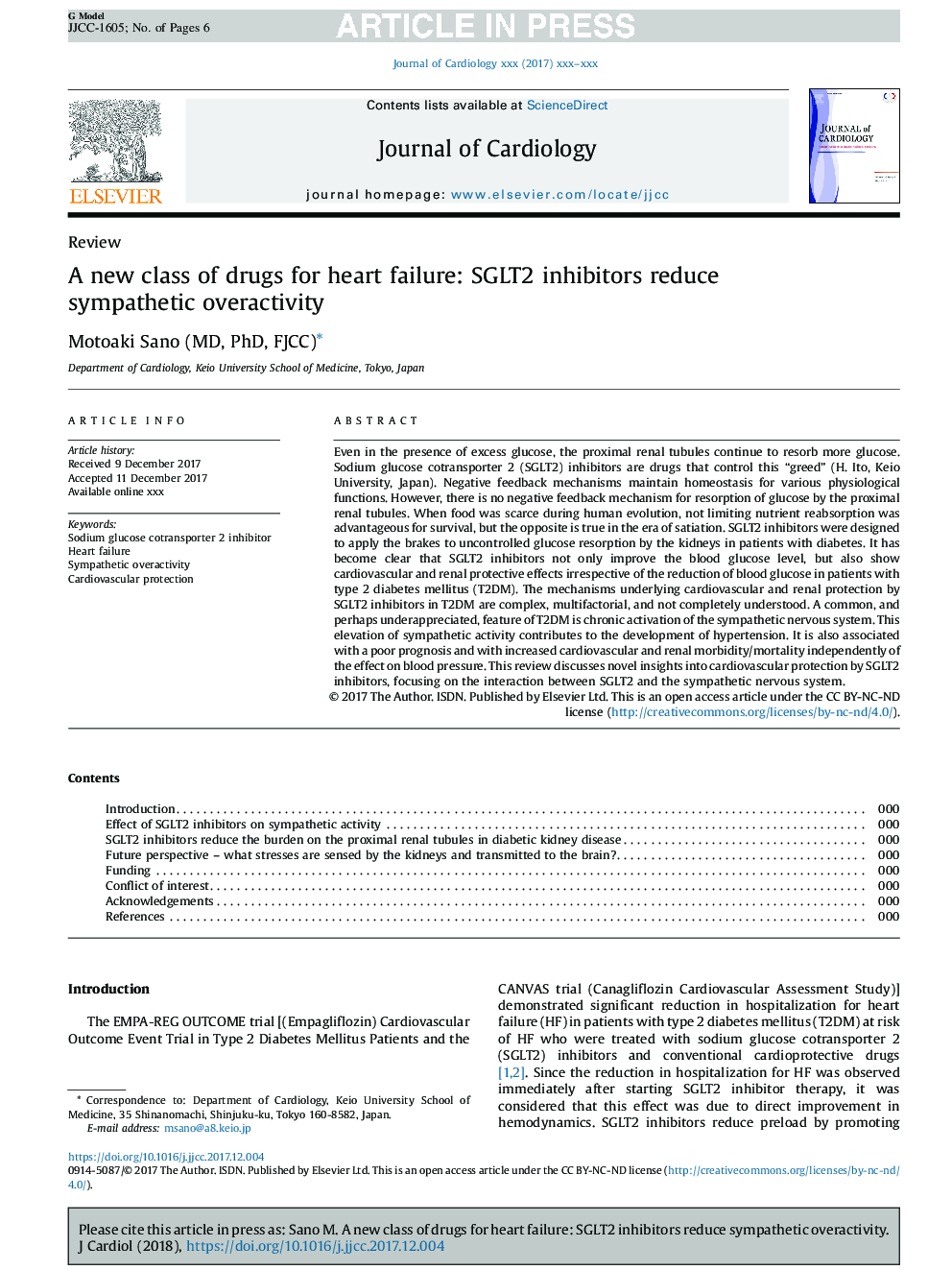| Article ID | Journal | Published Year | Pages | File Type |
|---|---|---|---|---|
| 8667874 | Journal of Cardiology | 2018 | 6 Pages |
Abstract
Even in the presence of excess glucose, the proximal renal tubules continue to resorb more glucose. Sodium glucose cotransporter 2 (SGLT2) inhibitors are drugs that control this “greed” (H. Ito, Keio University, Japan). Negative feedback mechanisms maintain homeostasis for various physiological functions. However, there is no negative feedback mechanism for resorption of glucose by the proximal renal tubules. When food was scarce during human evolution, not limiting nutrient reabsorption was advantageous for survival, but the opposite is true in the era of satiation. SGLT2 inhibitors were designed to apply the brakes to uncontrolled glucose resorption by the kidneys in patients with diabetes. It has become clear that SGLT2 inhibitors not only improve the blood glucose level, but also show cardiovascular and renal protective effects irrespective of the reduction of blood glucose in patients with type 2 diabetes mellitus (T2DM). The mechanisms underlying cardiovascular and renal protection by SGLT2 inhibitors in T2DM are complex, multifactorial, and not completely understood. A common, and perhaps underappreciated, feature of T2DM is chronic activation of the sympathetic nervous system. This elevation of sympathetic activity contributes to the development of hypertension. It is also associated with a poor prognosis and with increased cardiovascular and renal morbidity/mortality independently of the effect on blood pressure. This review discusses novel insights into cardiovascular protection by SGLT2 inhibitors, focusing on the interaction between SGLT2 and the sympathetic nervous system.
Related Topics
Health Sciences
Medicine and Dentistry
Cardiology and Cardiovascular Medicine
Authors
Motoaki MD, PhD, FJCC,
